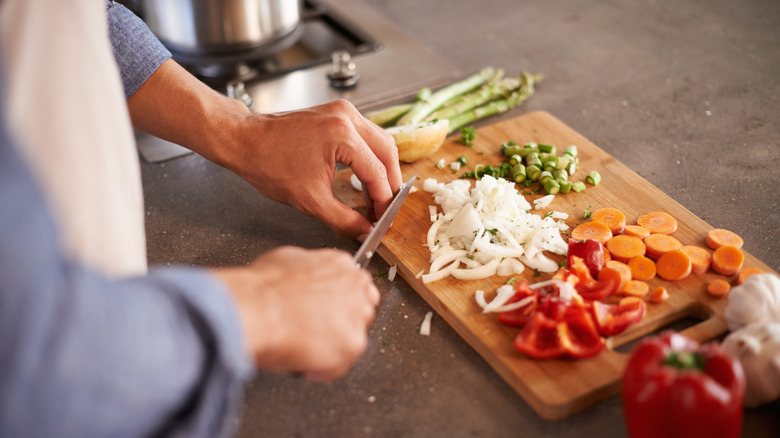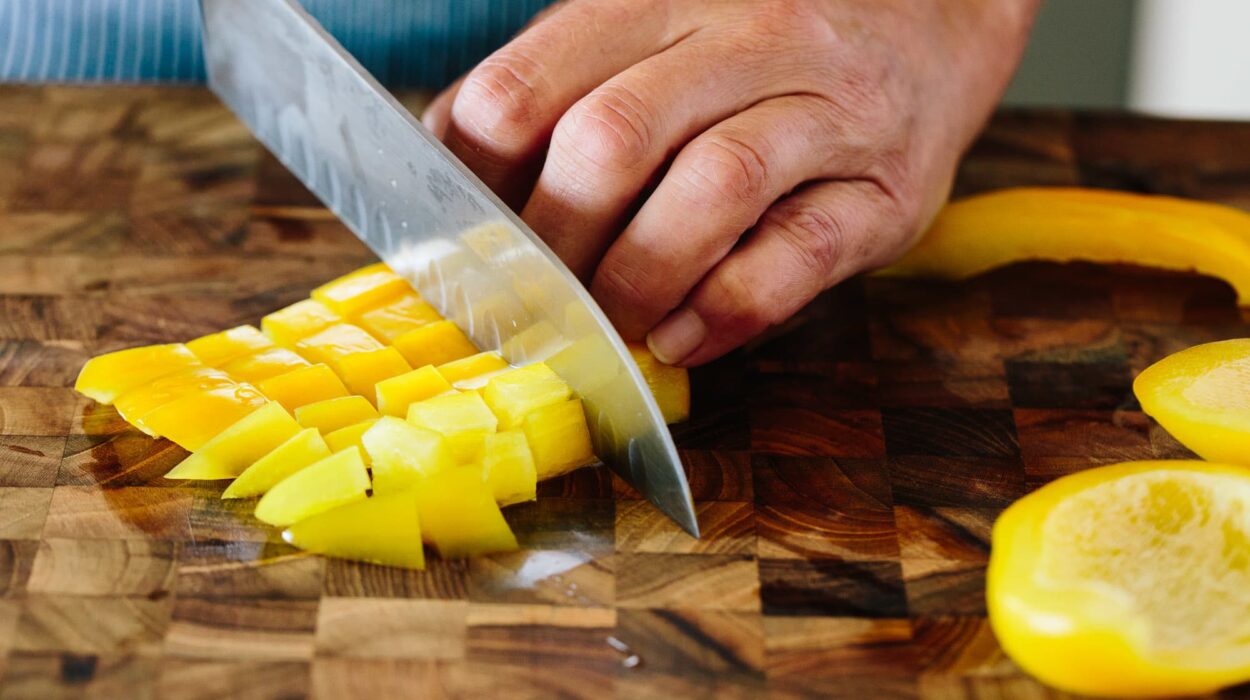When it comes to preparing fresh fruits and vegetables, many kitchen professionals and home cooks ask themselves, which color cutting board should I use? This question might seem trivial, but it’s actually an important consideration for maintaining food safety and avoiding cross-contamination.
In this article, we will delve into the reasons behind using different colored cutting boards and help you decide the best option for your needs. Understanding the purpose and importance of each color can enhance your kitchen hygiene and make your cooking process more efficient.

The Importance of Different Color Cutting Boards
Colored cutting boards aren’t just about aesthetics; they serve a crucial role in food safety. By designating specific colors for different types of foods, you can prevent cross-contamination, which could potentially lead to foodborne illnesses. The common color-coding system includes:
- Red: Raw meat
- Yellow: Raw poultry
- Blue: Raw seafood
- Green: Fresh fruits and vegetables
- Brown: Cooked meat
- White: Dairy products

Why Use a Green Cutting Board for Fruits and Vegetables?
The green cutting board is specifically designated for fresh fruits and vegetables. The reason behind this is to avoid cross-contamination from raw meats or other food items that could carry harmful bacteria. By using a green cutting board, you ensure that your fresh produce remains clean and safe to eat.
Benefits of the Color-Coding System
- Improved Food Safety: Reduces the risk of cross-contamination between different food types.
- Organized Kitchen: Helps maintain a systematic and efficient kitchen environment.
- Easy Identification: Simplifies the process of identifying which board to use for specific foods.

How to Properly Clean and Maintain Your Cutting Boards
Maintaining the hygiene of your cutting boards is essential. After each use, ensure you wash them thoroughly with hot water and soap. For extra sanitation, some people use a mild bleach solution or place plastic boards in the dishwasher. Learn more about sanitizing cutting boards.
Sanitizing Tips
- Use hot, soapy water: Wash your cutting boards immediately after use.
- Disinfect: Occasionally disinfect cutting boards with a mild bleach solution.
- Air dry: Allow cutting boards to air dry completely to prevent bacterial growth.
Choosing the Right Material for Your Cutting Boards
Color isn’t the only factor when selecting a cutting board. The material is equally important. Here are some common materials:
- Plastic: Non-porous, easy to clean, and dishwasher safe. However, they can develop deep grooves over time.
- Wood: Aesthetically pleasing and gentle on knives, but requires more maintenance to avoid contamination.
- Bamboo: More durable than wood and less porous, making it a great eco-friendly option.
- Composite: A mix of wood fibers and resin, durable and easy to clean, but can be harsh on knives.
Pros and Cons of Each Material
Each material has its pros and cons, and the best one for you depends on your specific needs. For instance:
- Plastic: Easy to clean but can get damaged quickly.
- Wood: Gentle on knives but needs regular maintenance.
- Bamboo: Eco-friendly and durable but can be pricey.
- Composite: Long-lasting but may dull your knives.
Maintaining Your Cutting Boards
Regardless of the material, maintaining your cutting boards is crucial for longevity and hygiene. Here are some tips:
- Regular Cleaning: Wash your boards thoroughly after each use.
- Occasional Oiling: Wooden boards benefit from occasional oiling to keep them in good condition.
- Inspect for Damage: Regularly inspect your boards for deep grooves or cracks that can harbor bacteria.
Conclusion
In summary, knowing which color cutting board to use to prepare fresh fruits and vegetables can significantly impact your kitchen’s hygiene and food safety. By using a green cutting board for fruits and vegetables, you minimize the risk of cross-contamination and ensure a safer cooking environment. Additionally, understanding the different materials and how to maintain them will help you keep your cutting boards in top condition, providing a reliable surface for all your food preparation needs.
FAQ
Why is it important to use different color cutting boards?
Using different color cutting boards helps prevent cross-contamination between different types of food, reducing the risk of foodborne illnesses.
What color cutting board should I use for fresh fruits and vegetables?
It is recommended to use a green cutting board for fresh fruits and vegetables to avoid cross-contamination from other food items.
How often should I replace my cutting boards?
Cutting boards should be replaced when they develop deep grooves or cracks that can harbor bacteria. Regular inspection is key to maintaining food safety.
As an Amazon Associate, I earn from qualifying purchases.


